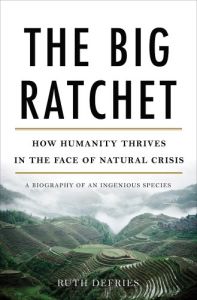Join getAbstract to access the summary!

Join getAbstract to access the summary!
Ruth DeFries
The Big Ratchet
How Humanity Thrives in the Face of Natural Crisis: A Biography of an Ingenious Species
Basic Books, 2014
What's inside?
With its most recent “ratchet,” humanity sidestepped disaster and found a way to thrive.
Recommendation
In this fair, thorough look at how modern agriculture changed the world, Columbia University professor Ruth DeFries explains the “ratchet-pivot-hatchet” mechanisms behind the Green Revolution and the human ingenuity driving each step. Her descriptions prove simple enough for the uninitiated; her exhaustive notes and references should satisfy the pickiest academic. DeFries neither issues a call for returning to subsistence farming nor champions modern agriculture. She strikes a balance while explaining the pros and cons of chemical fertilizers and modern, selectively bred crops. The second chapter is sometimes tedious, but provides valuable background and resources. DeFries – for better or worse – falls short of suggesting paths for the future. getAbstract recommends her history and analysis to anyone concerned about food production, agriculture, global hunger and environmental issues.
Summary
About the Author
Ruth DeFries, a professor of ecology, evolution and environmental biology at Columbia University in New York, studies how people transform the world around them.

















Comment on this summary